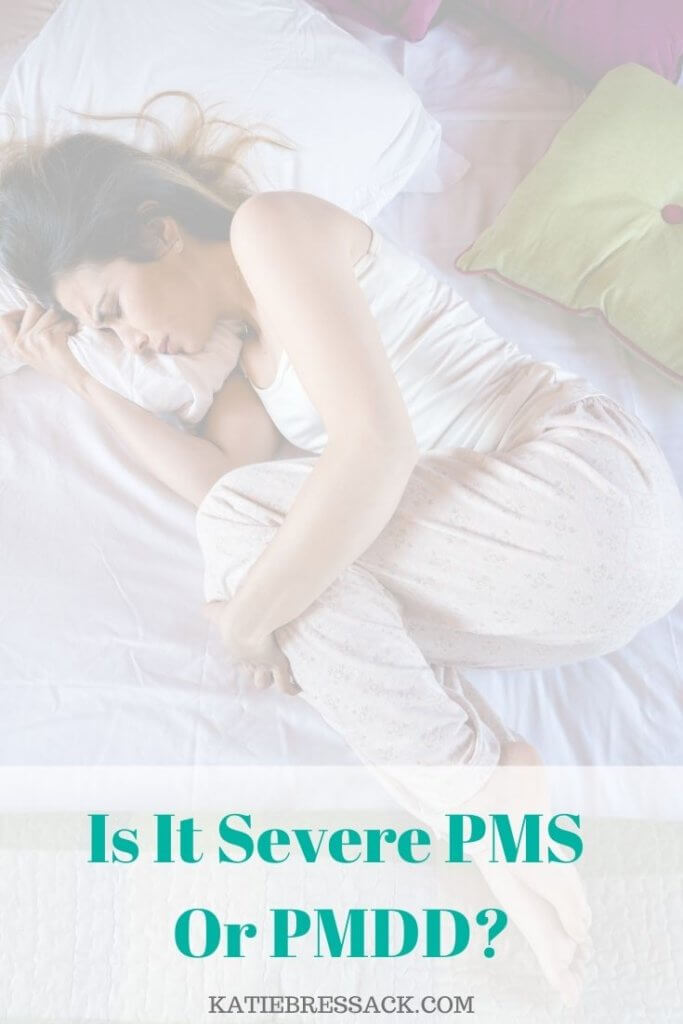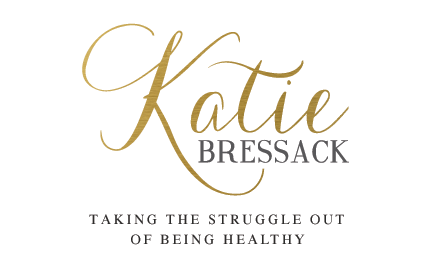You know the feeling. Irritable toward almost everyone, moody, snippy with your roommates and family? PMS has likely affected every woman at some point in her life, but there is an even more severe form of PMS called PMDD which can be debilitating at times and something you definitely should discuss with your doctor. So is it severe PMS or PMDD? Today I’m sharing in detail what PMS and PMDD are so you can get some more clarity and support with how you’ve been feeling and understand the difference between the two.
Both PMS and PMDD symptoms usually occur after ovulation and end once your period arrives. It’s important to track your cycle to notice how often you are experiencing PMS and especially if you make diet and lifestyle changes to see what helps your body the most as you make changes to support your hormones. As many as three in four women say they get PMS symptoms at some point in their lifetime, which is about seventy five percent of people who menstruate. Although PMS is common it doesn’t have to be your normal monthly existence. PMS is the bodies way of telling us that something isn’t right, and if we don’t take time to get to the root cause it will happen every single month.

PMS Symptoms
PMS can start about a week or a few days before your period arrives, ends when you get your period, and can include the following symptoms:
- Cramps
- Bloating
- Breakouts
- Back aches
- Headaches and even migraines
- Weight gain
- Breast tenderness
- Changes in bowel movements
- Disrupted sleep leaving you feeling exhausted
- Sadness
- Anxiety
- Irritability
About five percent of women of childbearing age get a more severe form of PMS, called premenstrual dysphoric disorder (PMDD). PMDD is a severe form of PMS that includes extreme physical and behavioral symptoms and it’s actually classified as a psychiatric disorder in the Diagnostic and Statistical Manual of Mental Disorders (DSM-5). PMS can start about a week or a few days before your period whereas PMDD can start anywhere from seven to 14 days before your period. Sometimes you might need medication so be sure to discuss your symptoms with your doctor.
PMDD Symptoms
PMDD can start anywhere from seven to 14 days before your period and can include the following symptoms:
- Lasting irritability or anger that may affect other people
- Feelings of sadness or despair, or even thoughts of suicide
- Feelings of tension or anxiety
- Panic attacks
- Mood swings or crying often
- Lack of interest in daily activities and relationships
- Trouble thinking or focusing
- Tiredness or low energy
- Food cravings or binge eating
- Trouble sleeping
- Feeling out of control
- Physical symptoms, such as cramps, bloating, breast tenderness, headaches, and joint or muscle pain
According to the DSM-5, “at least 5 of the following 11 symptoms (including at least 1 of the first 4 listed) should be present for diagnosis. They would need to be present a week or more before the person’s period, resolving when the period starts:
- Markedly depressed mood, feelings of hopelessness, or self-deprecating thoughts
- Marked anxiety, tension, feelings of being “keyed up” or “on edge”
- Marked affective lability
- Persistent and marked anger or irritability or increased interpersonal conflicts
- Decreased interest in usual activities (eg, work, school, friends, and hobbies)
- Subjective sense of difficulty in concentrating
- Lethargy, easy fatigability, or marked lack of energy
- Marked change in appetite, overeating, or specific food cravings
- Hypersomnia or insomnia
- A subjective sense of being overwhelmed or out of control
- Other physical symptoms, such as breast tenderness or swelling, headaches, joint or muscle pain, a sensation of bloating, or weight gain.”
How To Get Diagnosed
If you are curious to know whether or not it’s severe PMS or PMDD the best way to get a diagnosis is to keep a journal on your symptoms and share it with your doctor.
With PMDD you must have five or more PMDD symptoms, including one mood-related symptom, to be diagnosed with PMDD. PMDD can be a life-disrupting and miserable disorder, one that many women spend years trying to combat so please don’t take this lightly, speak up and often and reach out for support to help you navigate through this especially if you are feeling depressed and have thoughts of suicide.
You can be diagnosed with PMS if you experience the above symptoms five days before your period for at least three cycles in a row, PMS ends within four days after your period starts.
Is It Severe PMS or PMDD?
With PMS you may be snappy and irritable, but you can still function, with PMDD it disrupts your daily life and you might have to take personal days from work and you might even feel depressed and have thoughts of suicide. If this happens to you make sure your doctor knows and you have support.
On another note as you transition through perimenopause your PMS symptoms may get worse especially if you have been experiencing PMS for many years leading up to perimenopause. Continue to speak with your doctor and really focus on your diet and lifestyle. Once you are in menopause severe PMS and PMDD will end.
How To Reduce Severe PMS
If you’ve been part of my community for a while now you know that I like to start first with diet and lifestyle support because they play a huge role in your monthly PMS symptoms. Yet so many of us have never been taught how effective diet and lifestyle changes can be to help improve PMS. Making healthy changes to your diet and lifestyle and getting more movement into your day might help reduce some severe PMS and PMDD symptoms.
Ways to reduce severe PMS and PMDD symptoms
- Focus on keeping your blood sugar balanced. I’ve written extensively about this, so feel free to check out this blog
- Reduce inflammation in the body aka less sugar, less processed foods and oils
- Improve your gut health is essential for hormones you can read more here
- Support your liver is one step we often don’t focus on enough, here are some next step suggestions for you
- Focus on getting enough sleep, try and be in bed and asleep by 10 p.m. every night
- Discover healthy ways to cope and manage with stress with deep breathing, meditation, gratitude journals and creating healthy boundaries by allowing yourself to say no more often
- Move your body every single day
- Supplements can also help support you, before you take anything be sure to discuss this with your doctor. Some supplements that can help with PMS include:
- Vitamin B6 may help with PMS symptoms, including moodiness, irritability, forgetfulness, bloating, and anxiety. Vitamin B6 can be found in foods such as fish, poultry, potatoes. You can also take a supplement.
- Calcium. Studies show that calcium can help reduce some PMS symptoms, such as fatigue, cravings, and depression
- Magnesium I take Natural Calm every single night an hour before bed
- Fish oil and Vitamin D
- Work with a doctor that listens and supports you
Next steps
My five week group program, “Eating For Your Hormones” has helped hundreds of women reduce their monthly PMS symptoms by supporting their body with diet and lifestyle changes. You can learn more about this program here and join the waitlist by emailing me at katie@katiebressack.com
Sources
Premenstrual Dysphoric Disorder
Office On Women’s Health & Office On Women’s Health
I’d love to hear your thoughts!
- Was this post helpful for you? Or, do you have any additional questions? Comment below and let me know!
- Share with your friends, forward this along or post on social. You can also join me on Instagram and in my private FB group
- Want a deeper look into your hormones? Take my quiz to see what foods might be helpful to add into your diet
- Sign up for my newsletter full of women’s health tips and get your FREE guide, the five steps to take today to help balance your hormones
Medical Disclaimer
Information in this post and on this web site is provided for informational purposes only. The information is a result of practice experience and research by the author. This information is not intended as a substitute for the advice provided by your physician or other healthcare professional or any information contained on or in any product label or packaging. Do not use the information on this web site for diagnosing or treating a health problem or disease, or prescribing medication or other treatment. Information and statements regarding dietary supplements have not been evaluated by the Food and Drug Administration and are not intended to diagnose, treat, cure, or prevent any disease. Always speak with your physician or other healthcare professional before taking any medication or nutritional, herbal or homeopathic supplement, or using any treatment for a health problem.

.png)
.png)
.png)